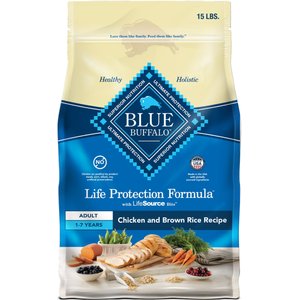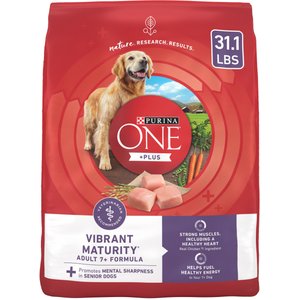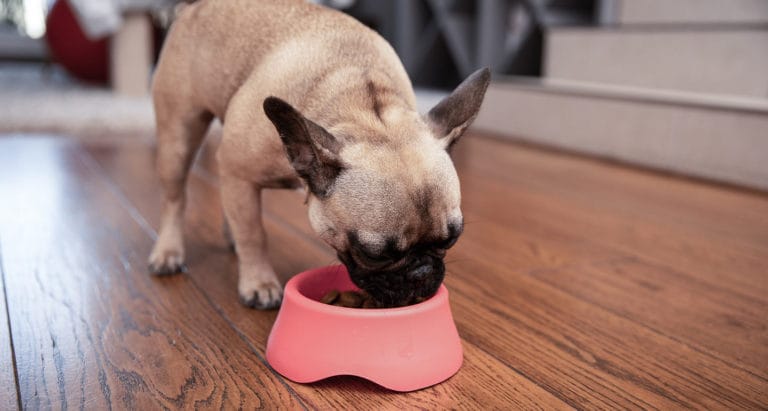Thanks to research and science, we now know that the nutritional needs of dogs change as they age. One way of ensuring your dog has the best chance of health and wellness is to feed food that is complete and balanced, high quality and age appropriate. But how can you tell when to switch your puppy to adult food—or when to begin your dog on a senior diet?
The answer depends on a number of factors including your dog’s age, breed and breed size and health concerns such as obesity or pregnancy. The below are general guidelines for feeding dog food at different life stages. Whenever you’re in doubt, consult with your veterinarian.
Click to jump to each section:
Puppies
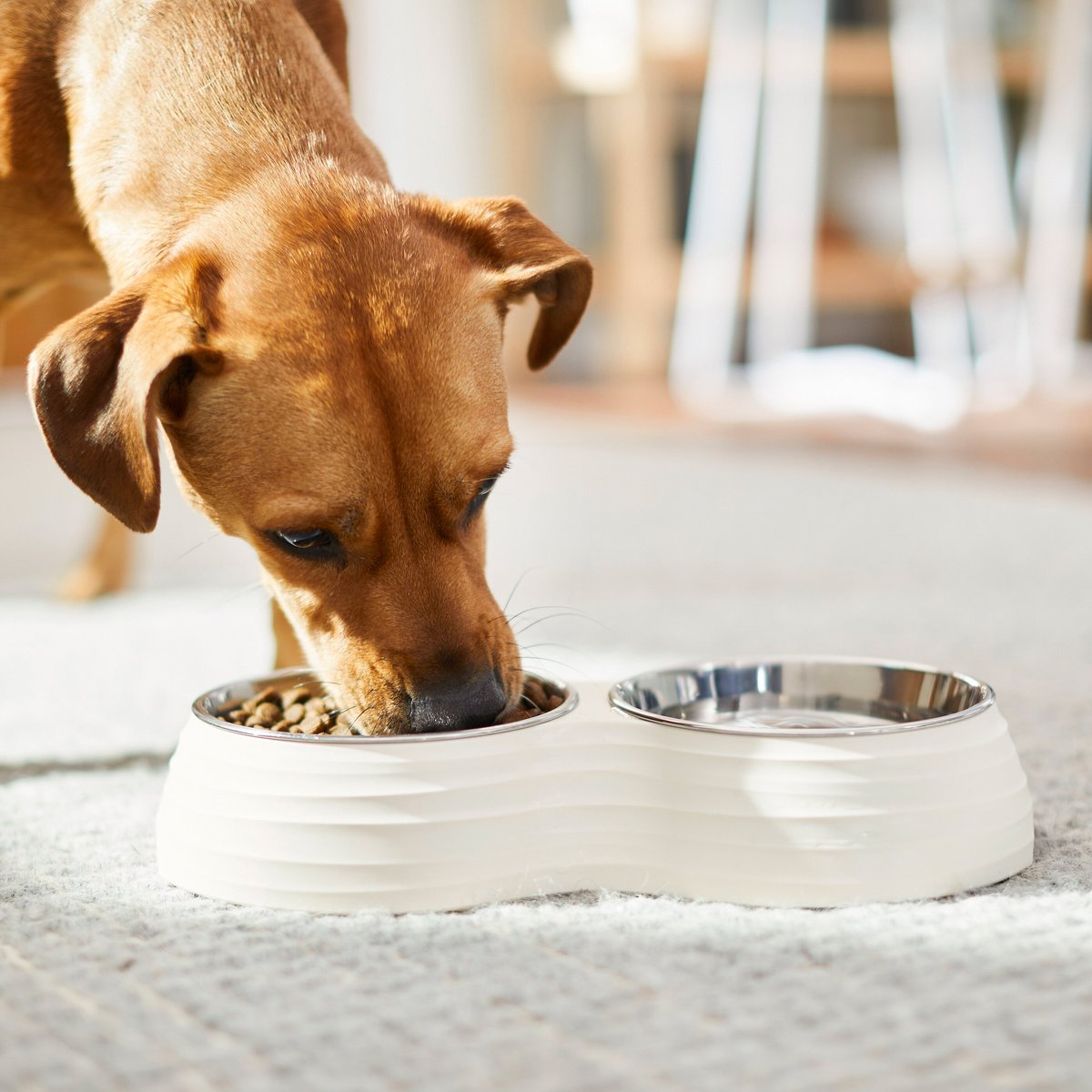
Ages 4-6 weeks to 9-24 months
Puppies have different nutritional needs than adult dogs. Let’s break down what puppies eat, as well as how long you should feed puppy food.
What do puppies eat?
Because they are growing, puppies require more calories and higher levels of protein than adult dogs. However, excessive calories and protein can also be detrimental because it causes puppies to grow too fast, which can result in joint problems later in life. Puppies also need specific levels of calcium and phosphorus to support healthy bone development.
So, when it comes to puppy nutrition, balance is key. You don’t want too much or too little of any essential nutrients. This is why puppy food is such an important part of your puppy’s development. Puppy food is specifically formulated for ideal growth, with a balanced diet and supplements for brain development to meet your puppy’s nutrition needs.
In addition, large breed puppies benefit from a specially formulated large breed puppy food, like American Journey Large Breed Puppy Food, that has balanced calcium-to-phosphorus ratios, optimum levels of protein and appropriate calorie counts.
How much food should puppies eat?
It’s very important you don’t overfeed puppies, especially large breed puppies, because overfeeding can predispose a puppy to development of joint disease.
While the feeding guide on the back of the bag of food is a good guideline on how much to feed, puppies will go through growth spurts where they will be hungrier and need to eat more.
Feed your puppy so that they stay thin, but not emaciated. You should be able to feel your puppy’s ribs but not see them. If you see ribs sticking out, then increase the amount you are feeding by 10 percent.
If you have any questions about how much you should feed your puppy, talk with your veterinary care team. They’re your best resource for knowing when to switch your puppy to adult food.
Learn more about how much to feed a puppy.
How long do I feed puppy food?
Puppies should be fed puppy food until they are done growing.
Puppies stop growing at different times based on their size:
- Small- and medium-sized puppies: These pups grow faster and are considered mature around 9 months of age.
- Large breed puppies: These pups take longer to be skeletally mature and are considered to be done growing around 15 months of age for large breeds, like Labrador Retrievers, and 18-24 months of age for giant breeds, like Great Danes, Mastiffs and Newfoundlands. That means that you will need to feed large breed puppies a food specially formulated for their needs for longer than you will need to feed puppy food to small or medium breed puppies.
Adults
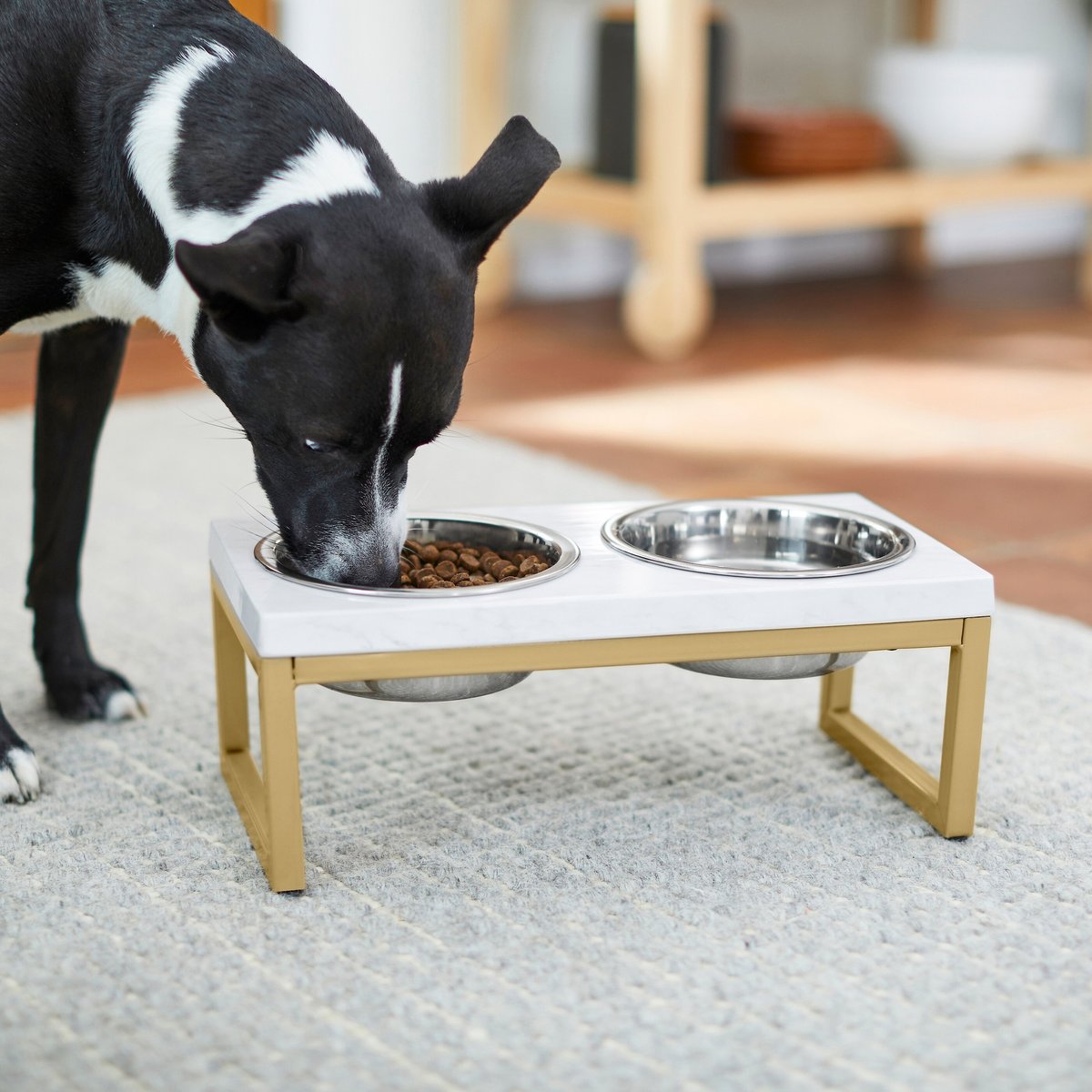
Age 1 year to 6-8 years
Two of the most common questions puppy parents have are 1) how long to feed puppy food and 2) when to switch to an adult diet. While it is always important to check with your veterinary care team about when to start this transition, here’s a good rule for knowing when to switch your puppy to adult food: start transitioning once they are done growing, as long as they aren’t overweight.
What do adult dogs eat?
Adult dogs need at least 18 percent of their daily calories to be protein, and at least 5.5 percent to be fat, according to the Association of American Feed Control Officials (AAFCO), which provides the nutritional standards for complete and balanced pet foods.
An adult dog can eat up to 50 percent of daily calories as carbohydrates, but 2.5-4.5 percent of the diet should be fiber to promote gut health.
How to choose adult dog food
With so many options available on the market today, it can be difficult to choose a food when you switch to adult dog food.
Heres’s what to look for and consider when choosing dog food:
-
The “complete and balanced” AAFCO statement on the packaging: When you are shopping for dog food, the most important thing you will need to look for is the AAFCO statement on the back of the bag that the food is complete and balanced. The statement should say that the food has been found to be complete and balanced based on formulation or AAFCO feeding trials. Blue Buffalo Life Protection Formula Adult Dog Food, for example, is an AAFCO option that includes ingredients such as peas, sweet potatoes, blueberries and cranberries.
-
The size of your dog: Another consideration when choosing a food for your dog is the size of your dog. If you have a large breed dog, feeding a food that has been formulated for large breed dogs, like Eukanuba Large Breed Adult Dry Dog Food, can help support joint health.
-
Your dog’s reaction: The best way to tell if a food is right for your dog is to monitor your dog’s condition while they’re on the food. Is the haircoat full and glossy? How are your pet’s energy levels? What about stool quality and quantity? If everything checks out, then the food is likely good for your dog.
How much food to feed an adult dog
When it comes to how much to feed, start with the feeding recommendations on the back of the bag and see how your dog does. You want your dog’s body condition score to be in the ideal range—not too heavy, not too thin.
One way to find out if your dog’s weight is healthy is to ask your veterinarian. This comes with an added bonus: If your pet’s weight isn’t ideal, your veterinarian will have recommendations for getting your pet to a healthy weight. They may suggest switching to a weight-loss diet such as Hill's Prescription Diet Metabolic Dry Dog Food.
How to switch to adult dog food
The most seamless way to do this is to purchase a bag of adult food when you purchase the last bag of puppy food, and gradually mix the two dry foods together, increasing the ratio of the new kibble over the course of about a week.
Pregnant or Nursing Dogs

Pregnant and nursing dogs have different nutritional requirements than other adult dogs.
What do pregnant or nursing dogs eat?
These dogs should be eating food that is calorie dense and high in protein. Look for foods that are at least 22 percent protein.
It may seem unusual, but feeding puppy food, like Purina Pro Plan Focus Puppy Dry Dog Food, to a pregnant or nursing dog is a good way to meet these requirements.
Because puppies, like pregnant and nursing dogs, also need more calories and protein than other dogs, food made for them is suitable for dogs who are moms or moms-to-be too.
How much food to feed a pregnant or nursing dog
The good news for your pregnant or nursing dog is unless she is overweight, you can let her have all she wants.
Senior Dogs

Age 6-10 years
The age at which a dog is considered a senior depends, again, on size and breed.
In general, the larger a dog is, the earlier they are considered a senior. While the largest dogs generally enter their senior years around 6 years old, small breed dogs may not be considered to be seniors until age 10.
What do senior dogs eat?
Older dogs have different needs than younger dogs.
Obesity and decreased gastrointestinal function are common complaints amongst senior dog parents. Therefore, senior dogs can benefit from a food that has lower calories and higher fiber.
Many senior foods are also formulated with supportive nutrients, such as Purina ONE SmartBlend Vibrant Maturity 7+ Adult Formula Dry Dog Food, which includes omega-6 fatty acids and glucosamine for joint health.
How much food to feed a senior dog
When it comes to the amount to feed, the same recommendations as for adult dogs stand.
Utilize the feeding chart on the back of the package, the hand test and/or talk to your veterinary care team about how much to feed your senior dog.
Use this dog food age chart to help you determine which type of food you should feed your dog.
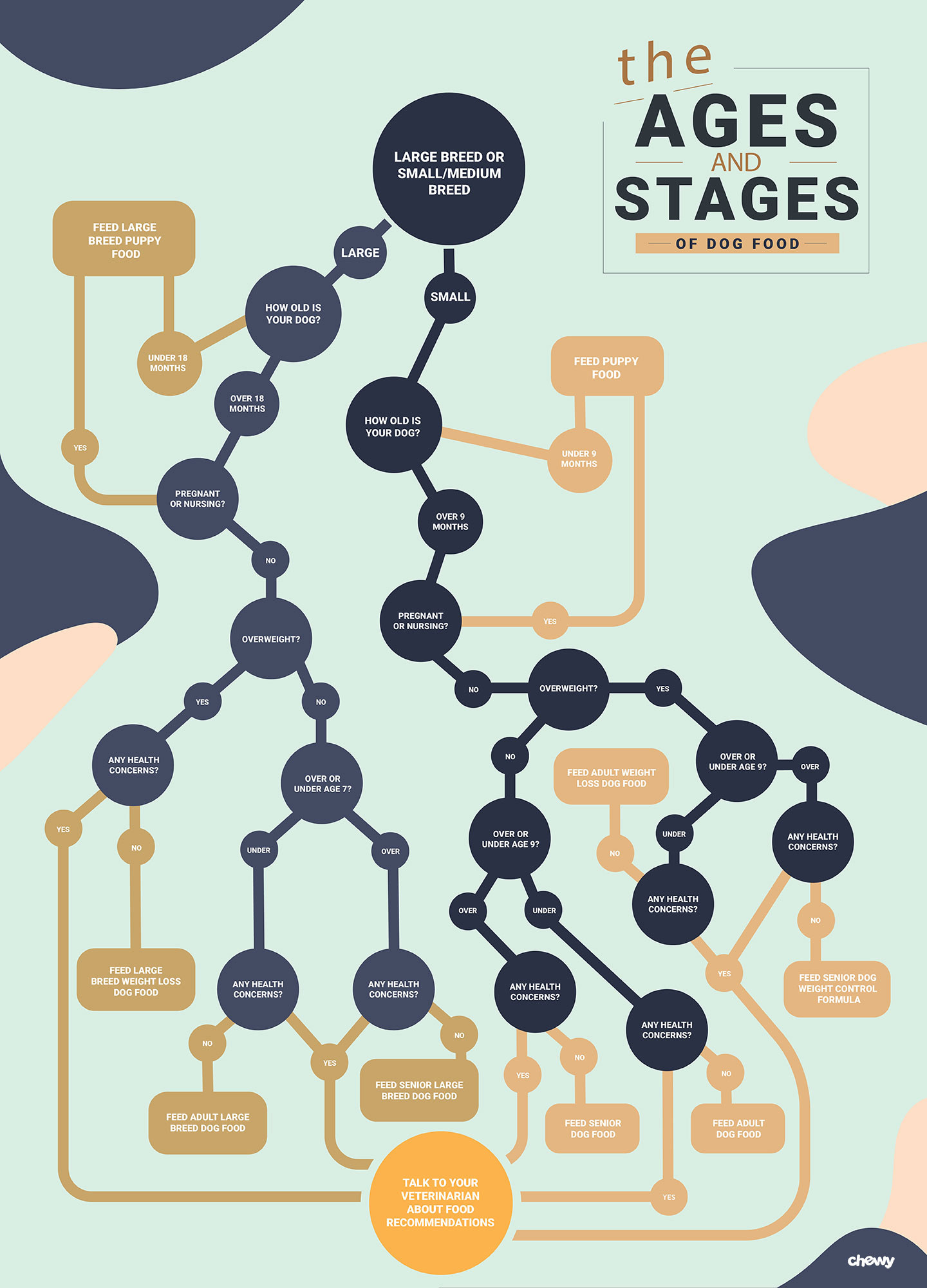
FAQs About When to Switch Puppy to Adult Food
Q:What happens if you switch from puppy food too early?
A:Because rapid diet changes can cause gastrointestinal upset in dogs, such as vomiting and diarrhea, it is recommended to introduce the new food slowly over a period of five days or so. Start by feeding a mix of puppy and adult dog food gradually transitioning to just adult dog food. If you see tummy upset issues, consult your vet.
Q:Do puppies really need "puppy" food?
A: Yes, it is important to give your puppy food formulated to provide the nutritional support it needs while it grows to adulthood. While a regular diet of puppy food is essential, the occasional dish of adult dog food won't be detrimental to their health.
More Dog Feeding Tips:
Share:





